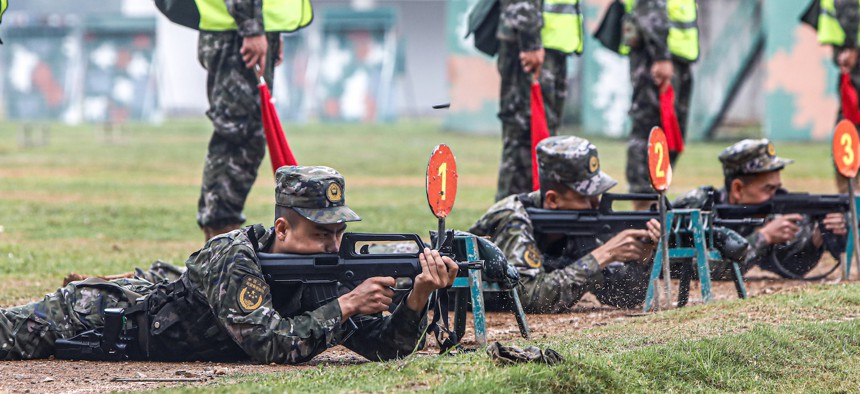JANE HARMAN and ERIC EDELMAN

Included in the bill to extend our nation’s debt limit is a cap on defense spending at 3 percent above last year’s levels, matching President Biden’s budget request of $886 billion but still falling short of inflation. The bill further limits next year’s defense spending to 1 percent above that.
Like most of the provisions of the bill, the defense spending level has come under fire from both sides. But the debate over the top line misses one key point: how much we spend on defense is less critical than how well our investments address the challenges the country faces. And on this point, there should be universal agreement that our current budget does not provide the workforce, the equipment, the technology, or the infrastructure needed to secure our national security interests and keep our global leadership position.
As the Chair and Vice Chair of the Commission on the National Defense Strategy, we are leading a review of the 2022 National Defense Strategy and making recommendations to the President and the Congress on what needs to be done. Included in that review is a mandate to evaluate “the resources necessary to support the strategy, including budget recommendations.” Our report is due next fall.
In 2018, the previous NDS Commission noted that “the security and wellbeing of the United States are at greater risk than at any time in decades. America’s military superiority—the hard-power backbone of its global influence and national security—has eroded to a dangerous degree.” The Commission recommended “that Congress increase the base defense budget at an average rate of three to five percent above inflation” in the coming years.
While spending has increased a bit since then, the strategic environment is no more promising now.
The Defense Department, as indicated in the NDS, has shifted focus from our 20-year wars in Afghanistan and Iraq and recognized that our potential adversaries are far more capable.
China, in particular, has studied American warfighting and built a military designed to negate our advantages. In order to deter China from taking actions we oppose—for example, the forceful reunification of Taiwan or blocking the freedom of navigation in the western Pacific—our military will require a new set of capabilities.
Similarly, our mechanism for purchasing equipment and the defense industrial base’s capacity to produce it, are ill-suited for the future of warfare. The experience in supplying Ukraine with a relatively limited set of weapons and munitions shows that we need larger stockpiles, but just as important, the ability to increase production in a crisis.
Less obvious, but equally important, is thinking through how cyber, space, and ubiquitous sensors will factor in future conflicts; indeed, these technologies are being used every day against our systems below the level of warfare. Contemplating the role of artificial intelligence is even more complicated.
Moreover, the technological superiority that the United States has enjoyed over every adversary since the latter days of the Cold War is no longer assured. The answer in some cases is buying more, but it is also being more strategic, more visionary, more nimble.
Our Commission will look more broadly, including on ways to spend smarter. Are there missions better suited to diplomacy or foreign assistance or an alliance rather than areas where DoD often takes the lead? Is our force structure and the mix of talent in our military and civilian workforce the right one? Can billions of dollars in research and development be better spent in harnessing the innovation of the private sector? Are we getting the bang for our buck in the military healthcare system? Should Congress provide the Pentagon with more flexibility to move faster, understanding that speed often comes with risk?
We understand that fights over the top-line budget are often a shorthand for being strong on defense. And while spending more on defense doesn’t guarantee we will deter China and roll back Russian aggression, spending less will almost certainly fail.
But it is also true that buying incrementally more of the same mix of weapons and technology won’t produce a force necessary to meet the challenges posed by an increasingly aggressive China and Russia. More alone isn’t better; better is better.
No comments:
Post a Comment